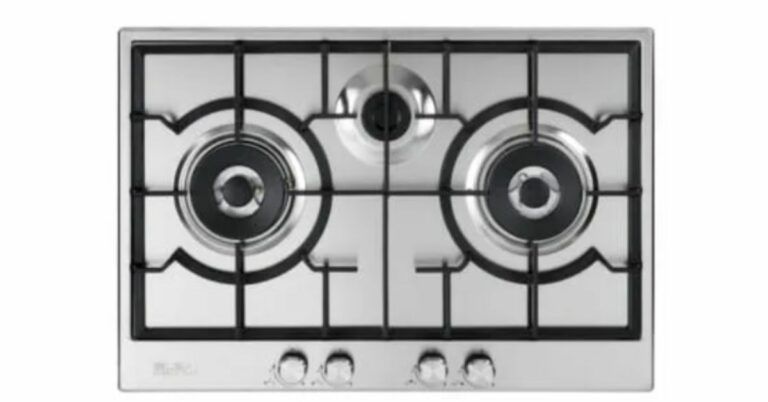Exploring Marine Machines: Powering the Future of Maritime Operations
The maritime industry has long been a backbone of global trade and transportation. At the heart of this vast sector lies a wide array of specialized equipment collectively known as Marine Machines. These machines play a critical role in everything from commercial shipping and fishing to offshore exploration and naval defense. For businesses and operators in the maritime space, understanding the capabilities, innovations, and applications of marine machinery is essential to maintaining operational efficiency, safety, and sustainability. In this comprehensive blog, we will delve into what marine machines are, their importance in various maritime sectors, recent technological advancements, and how businesses can leverage these machines to enhance performance and reduce costs.
What Are Marine Machines?
Marine machines refer to a broad category of mechanical equipment and systems designed specifically for use in maritime environments. These machines operate aboard ships, offshore platforms, ports, and coastal installations. They are built to withstand harsh conditions such as saltwater corrosion, high humidity, and extreme weather, all while performing critical functions. Some common examples of marine machines include: marine engines and propulsion systems, deck machinery like winches and cranes, pumping systems for ballast and fuel, navigation and communication equipment, underwater vehicles and remotely operated machines, hydraulic systems for steering and control. The design and engineering of these machines demand precision, durability, and compliance with strict maritime regulations.
Importance of Marine Machines in Maritime Operations
Marine machines are indispensable across many maritime operations. Their contributions ensure ships and offshore platforms remain functional, safe, and efficient.
1. Power and Propulsion
The most critical component of any vessel is its propulsion system. Marine engines and propellers provide the necessary thrust to move the ship through water. Innovations in engine technology, including cleaner fuels and hybrid propulsion, are helping reduce environmental impact while improving efficiency.
2. Cargo Handling and Deck Operations
Marine deck machinery such as cranes, winches, and hoists allow ships to load, unload, and secure cargo. Efficient cargo handling reduces turnaround times in ports, directly affecting profitability.
3. Safety and Environmental Protection
Marine machines include systems like firefighting pumps, bilge pumps, and ballast water treatment units. These machines help maintain the safety of the crew, protect the vessel’s integrity, and ensure compliance with environmental regulations.
4. Navigation and Communication
Sophisticated navigation systems powered by advanced marine machines enable safe and precise voyage planning. Communication equipment ensures continuous contact with shore-based operations and other vessels.
Types of Marine Machines and Their Applications
Marine machines vary widely depending on their specific use case and the type of vessel or platform they serve.
Marine Engines and Propulsion Systems
These include diesel engines, gas turbines, and increasingly, hybrid and electric propulsion systems. They convert fuel energy into mechanical power to drive propellers or water jets. Efficient propulsion systems are vital for fuel economy and reducing greenhouse gas emissions.
Deck Machinery
Equipment such as anchor winches, mooring winches, cranes, and conveyors fall under this category. These machines support cargo handling, anchoring, and other deck operations. Heavy-duty construction and reliable performance are key features.
Pumps and Fluid Handling Systems
Marine pumps move fluids such as ballast water, fuel, oil, and sewage. Specialized pumps handle high pressures and corrosive fluids, ensuring ship stability and operational safety.
Navigational Aids and Control Systems
Modern marine machines integrate GPS, radar, sonar, and autopilot systems, enabling precise navigation. Control systems automate various ship functions, reducing crew workload.
Offshore and Subsea Equipment
These include remotely operated vehicles (ROVs), subsea cranes, and drilling machines used in offshore oil and gas exploration. Marine machines in this sector must endure extreme underwater pressures and temperatures.
Innovations in Marine Machinery
The maritime industry is undergoing a technological transformation driven by environmental regulations, digitalization, and the push for operational efficiency.
Green Technologies and Emission Reduction
New marine machines are designed to minimize environmental impact. This includes engines running on LNG (liquefied natural gas), hybrid propulsion combining diesel and electric power, and exhaust cleaning systems like scrubbers.
Automation and Smart Systems
Automation in marine machines improves safety and efficiency. Sensors and IoT (Internet of Things) technology enable real-time monitoring and predictive maintenance, reducing downtime and operational costs.
Advanced Materials and Design
The use of corrosion-resistant alloys, composites, and 3D-printed components enhances the durability and performance of marine machines. These materials reduce maintenance needs and extend equipment lifespan.
Energy Efficiency and Waste Heat Recovery
Innovations include more efficient engines and systems to capture and reuse waste heat from engines for heating or additional power generation, further reducing fuel consumption.
Choosing the Right Marine Machines for Your Operation
Selecting appropriate marine machinery is critical for any maritime business. Several factors influence this decision: vessel type and size—different ships require different propulsion and deck equipment; operational environment—offshore operations demand robust and specialized machines; regulatory compliance—machines must meet international maritime standards; budget and lifecycle costs—consider initial investment, maintenance, and fuel efficiency; technological compatibility—ensure integration with existing ship systems. Working with experienced suppliers who understand maritime requirements can help optimize machinery selection.
Maintenance and Safety of Marine Machines
Regular maintenance is essential to ensure the reliability and longevity of marine machines. This includes scheduled inspections, lubrication, component replacements, and software updates for automated systems. Safety protocols must be strictly followed to prevent accidents and equipment failure. Training personnel on proper machine operation and emergency procedures is equally important for operational safety.
The Future of Marine Machines
The future of marine machinery is geared toward sustainability, automation, and connectivity. Some anticipated trends include: widespread adoption of electric and hybrid propulsion systems; increased use of AI and machine learning for predictive maintenance; integration of blockchain technology for equipment tracking and supply chain management; development of autonomous vessels relying entirely on advanced marine machines. These advancements promise to revolutionize maritime operations, making them safer, cleaner, and more efficient.
Frequently Asked Questions (FAQ)
What are marine machines?
Marine machines are specialized mechanical equipment designed for maritime use, including engines, pumps, cranes, navigation systems, and underwater vehicles.
Why are marine machines important?
They are essential for ship propulsion, cargo handling, safety, navigation, and environmental compliance in maritime operations.
What types of propulsion systems are used in marine machines?
Common propulsion systems include diesel engines, gas turbines, and emerging hybrid and electric systems aimed at reducing emissions.
How do marine machines contribute to environmental sustainability?
Modern marine machines incorporate green technologies like LNG fuel, emission scrubbers, and energy-efficient designs to reduce pollution.
What maintenance is required for marine machines?
Maintenance involves regular inspections, lubrication, part replacements, and software updates to ensure safety and optimal performance.
Are there automated marine machines?
Yes, many marine machines now feature automation and remote monitoring, improving efficiency and reducing human error.
Conclusion
Marine machines are the lifeblood of the maritime industry. Their role spans powering vessels, handling cargo, ensuring safety, and enabling advanced navigation. With continuous innovation driven by environmental and operational demands, these machines are evolving rapidly. For maritime operators looking to stay competitive and compliant, investing in the right marine machinery and maintaining it diligently is essential. By embracing technological advancements and sustainable practices, the maritime industry can chart a course toward a more efficient and environmentally responsible future.
If you want to explore high-quality marine machinery solutions or need expert advice for your maritime operations, consider partnering with trusted industry leaders who understand the unique demands of the marine environment.
Read More
- https://businessmagazine.com.in/can-you-use-a-50hz-fridge-on-60hz-power-everything-you-need-to-know/







